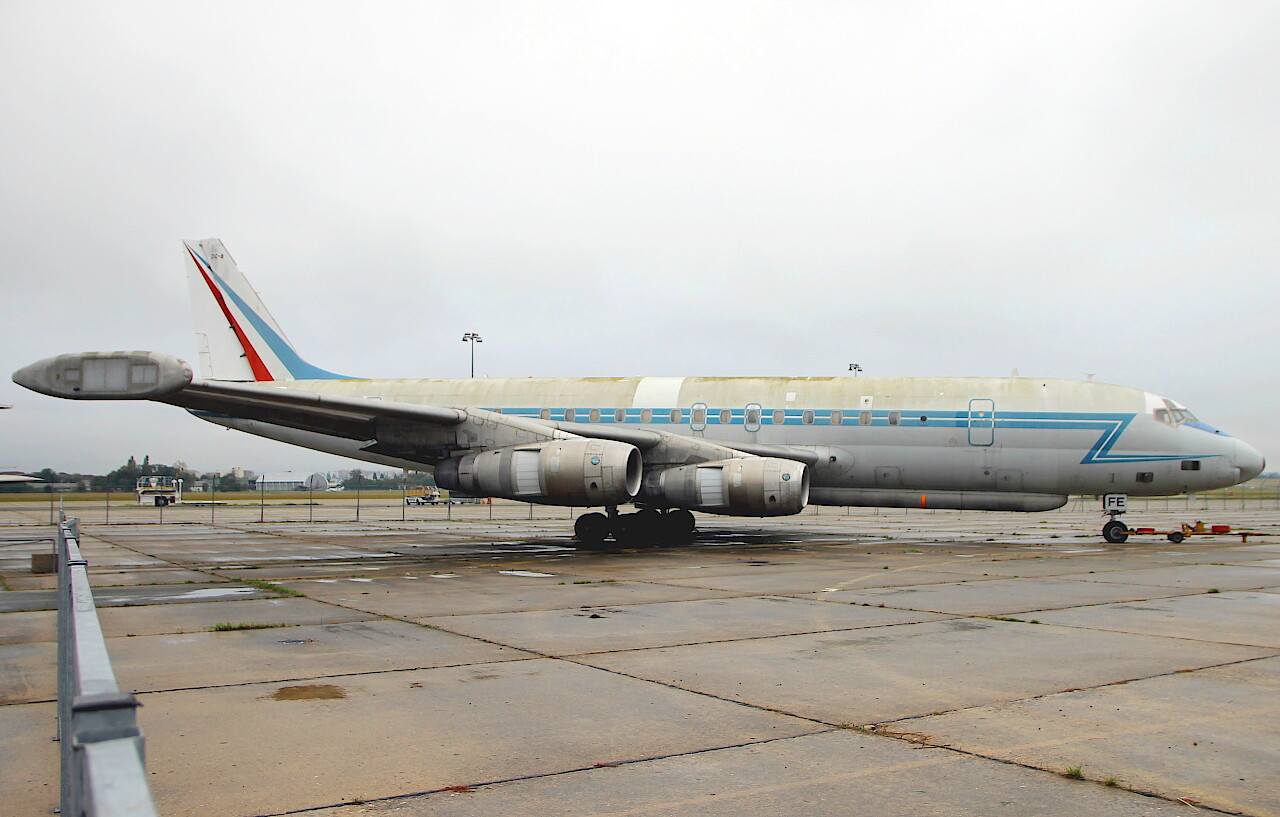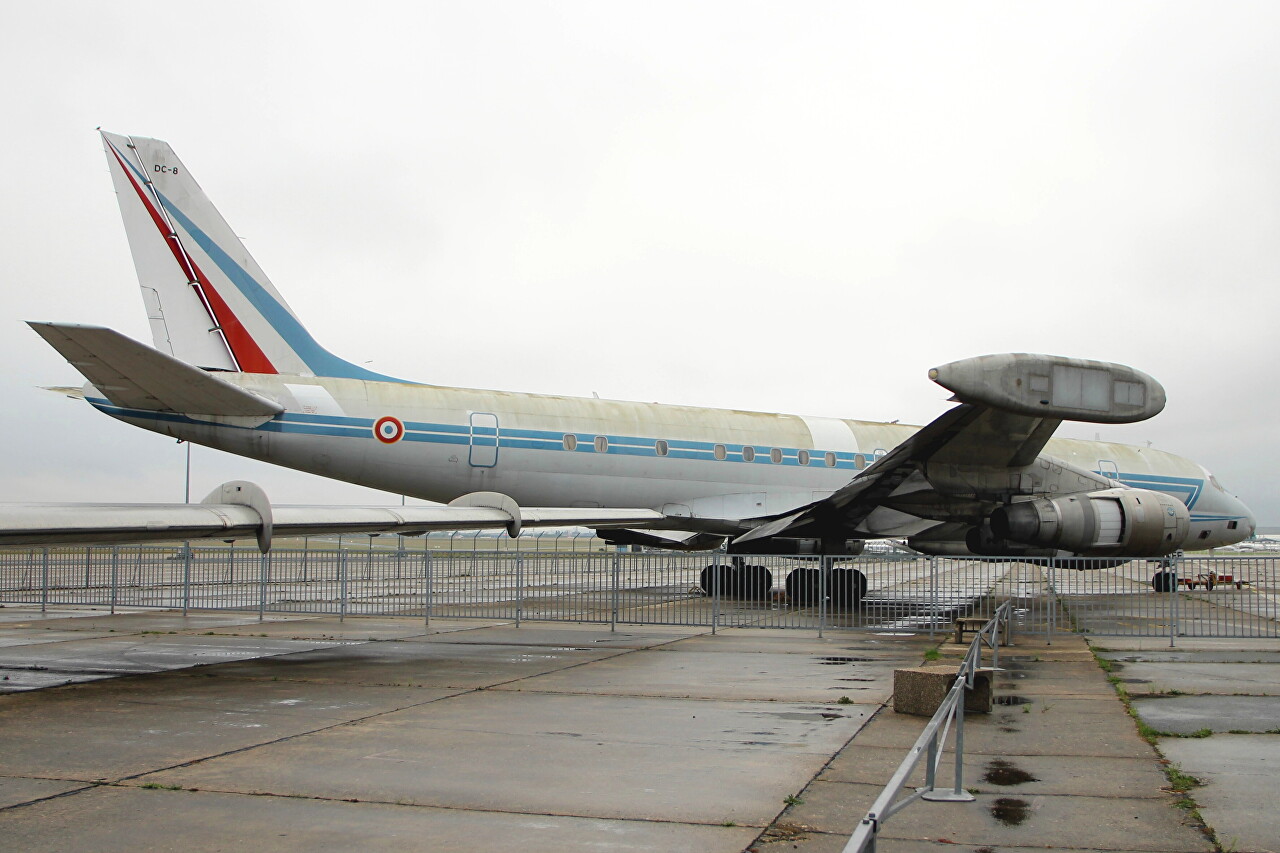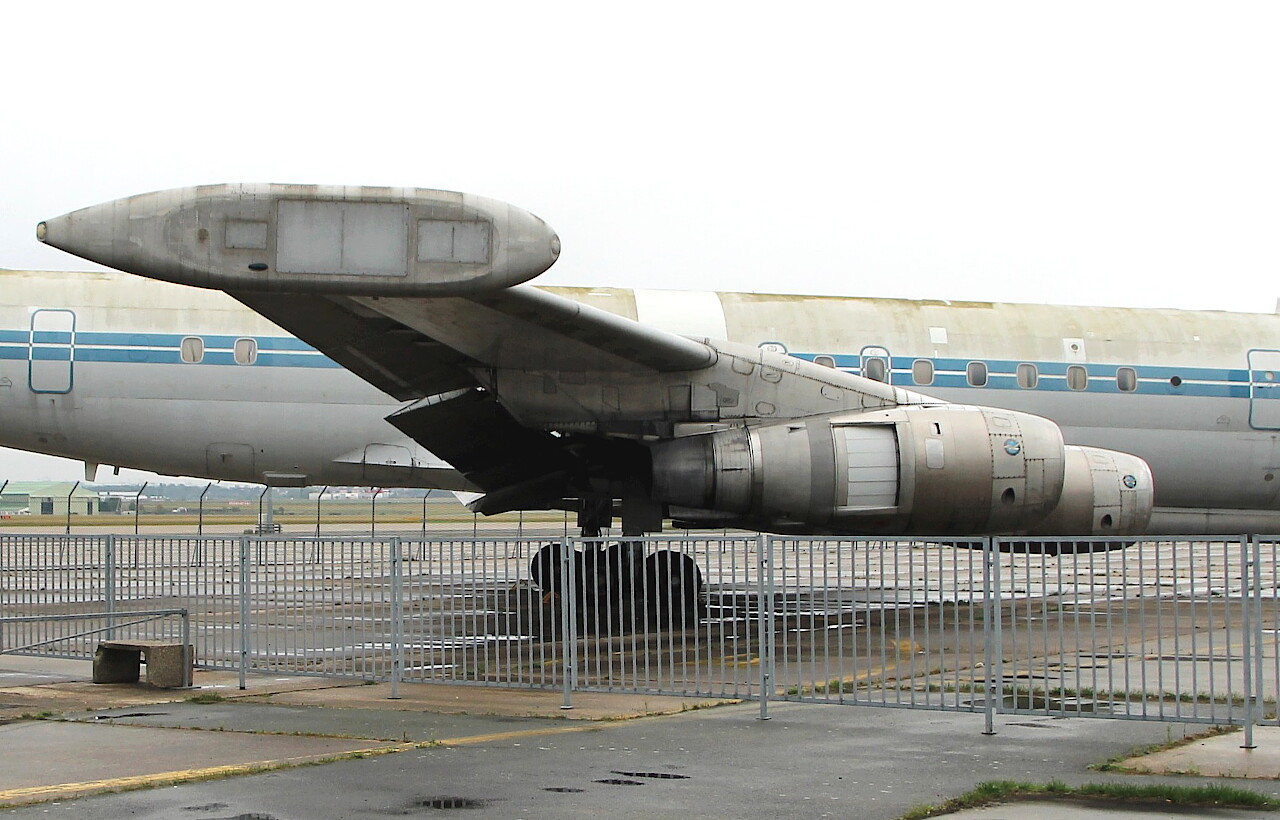Douglas DC-8 'Le SARIGuE', Electronic Reconnaissance Aircraft (Le Bourget)
The DC-8 transcontinental liner entered the line in 1968, becoming Douglas answer to the Boeing-707. The aircraft with four turbojet engines could accommodate up to 174 passengers and had a range of over 8 thousand kilometers.

This aircraft was purchased by the French company Transports Aériens Intercontinentaux (T.A.I) and opened the airline Los Angeles - Papeete (the capital of French Polynesia) on the first flight on March 5, 1961. At that time, it was the longest airline in the world, with a length of 6,756 km, and a flight time of over 8 hours. Two years later, the liner began to fly from Paris to Africa, having flown a total of 41 thousand hours.

In 1973, the aircraft was purchased by the French Air Force and was equipped with radio intelligence equipment, as a result of which gondolas for antennas and electronic equipment appeared on the ends of the wings and under the fuselage. The complex received a long name: Système Aéroporté de Recueil d'information de Guerre Electronique or SARIGuE (Aerial Information Collection and Electronic Warfare System) and entered service on July 15, 1976. The aircraft performed tasks of the international coalition during the 1991 Gulf War and from 1992 to 1997 in the Yugoslav conflict.

On July 25, 2001, the aircraft made its last landing in Le Bourget, having spent 60,442 hours in the air over 40 years of operation. In these pictures of 2012, the plane is standing in the commercial area of the airport in a fairly battered "combat" form, currently it has been restored and is located in the museum open air exhibition.